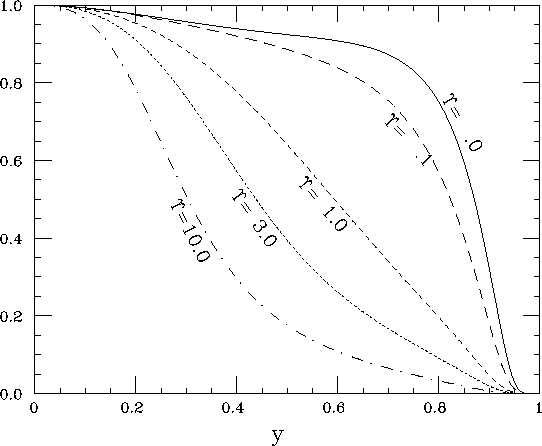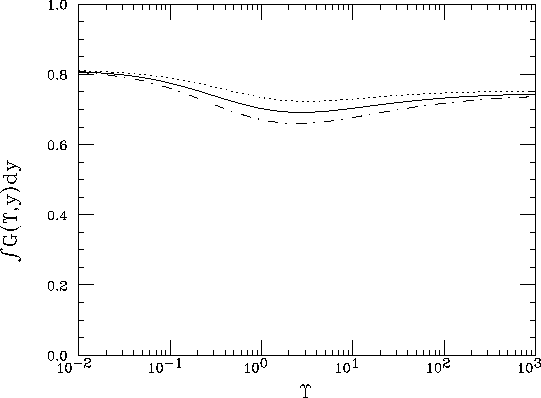The random number generation using the acception-rejection method is applicable when the distribution function is everywhere finite and is most efficient when the function is flat.
Since the function ![]() is infinite at
is infinite at ![]() ,
the following variable y is introduced in
CAIN instead of the photon energy fraction x in order to make the
distribution function finite and relatively flat.
,
the following variable y is introduced in
CAIN instead of the photon energy fraction x in order to make the
distribution function finite and relatively flat.![]()
![]()
The number of photons during a time interval ![]() in the
photon energy range (y,y+dy) is then given by
in the
photon energy range (y,y+dy) is then given by
![]()
where
![]()
![]()
The function ![]() is
less than or equal to unity for any
is
less than or equal to unity for any ![]() and y.
It is plotted in Fig.7.
and y.
It is plotted in Fig.7.

Figure 7: Function ![]() for various values of
for various values of ![]() .
Unpolarized case only.
.
Unpolarized case only.
The photon generation in CAIN proceeds in the following way.

Figure 8: The acception probability in the step (6) as a function of
![]() . The solid line is the unpolarized case
The dot-dash and dotted lines are polarized cases with
. The solid line is the unpolarized case
The dot-dash and dotted lines are polarized cases with
![]() = 1 and -1, respectively.
= 1 and -1, respectively.